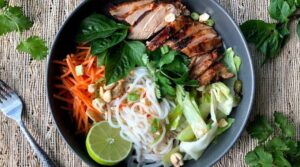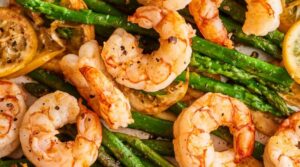Beans are a nutritional powerhouse, offering a wealth of health benefits. Packed with protein, fiber, vitamins, and minerals, they are a staple in many diets around the world. Here, we explore seven of the healthiest beans you can eat, based on recommendations from dietitians.
Lentils
Lentils are a fantastic source of plant-based protein and polyphenols, which have anti-inflammatory and antioxidant properties. These small legumes are incredibly versatile and can be used in soups, stews, salads, and more. They are rich in iron, folate, and fiber, making them an excellent choice for those looking to boost their nutrient intake. Lentils come in various colors, including green, brown, red, and black, each offering slightly different textures and flavors but all providing significant health benefits.
White Beans

White beans, including navy, cannellini, and great northern beans, are known for their mild flavor and creamy texture. They are an excellent source of protein and fiber, which help in maintaining digestive health and promoting satiety. White beans are also rich in essential nutrients such as iron, magnesium, and folate. They can be used in a variety of dishes, from soups and stews to salads and casseroles. Their ability to absorb flavors makes them a versatile addition to any meal.
Black Beans
Black beans are nutrient-dense and packed with antioxidants, vitamins, and minerals. They are particularly high in fiber, which supports digestive health and helps regulate blood sugar levels. Black beans are also a good source of plant-based protein, making them an ideal choice for vegetarians and vegans. They are commonly used in Latin American cuisine, featured in dishes like black bean soup, burritos, and salads. Their rich, earthy flavor and firm texture make them a favorite in many kitchens.
Chickpeas

Chickpeas, also known as garbanzo beans, are incredibly versatile and can be used in a variety of ways. They can be roasted, pan-fried, mashed, eaten cold, or pureed into hummus. Chickpeas are rich in protein, fiber, and essential nutrients like iron, magnesium, and folate. They have a low glycemic index, which helps in controlling blood sugar levels. Additionally, chickpeas contain polyphenols with antioxidant properties, contributing to overall health. Whether in salads, curries, or snacks, chickpeas are a nutritious addition to any diet.
Pinto Beans
Pinto beans are among the most commonly consumed beans, and for good reason. A half-cup serving provides 8 grams of fiber, which is more than 28% of the daily fiber requirement. This high fiber content supports digestive health and helps maintain healthy cholesterol levels. Pinto beans are also a good source of protein, vitamins, and minerals such as folate and magnesium. They are often used in Mexican cuisine, in dishes like refried beans, burritos, and chili. Their creamy texture and rich flavor make them a popular choice for many.
Red Kidney Beans

Red kidney beans are a great source of plant-based iron, making them particularly beneficial for those with increased iron needs, such as women and vegetarians. They are most commonly used in dishes like rice and beans, chili, and stews. Red kidney beans are also high in fiber, which aids in digestion and helps regulate blood sugar levels. They contain antioxidants that protect against cell damage and contribute to overall health. With their robust texture and slightly sweet flavor, red kidney beans are a nutritious and versatile addition to any meal.
Lupini Beans
Lupini beans are one of the highest-protein plant foods available, with a half-cup serving containing 13 grams of protein, nearly twice as much as 2 ounces of meat. They are also rich in fiber, vitamins, and minerals, including magnesium, potassium, and zinc. Lupini beans are traditionally consumed as a snack in Mediterranean countries, but they can also be added to salads, soups, and stews. They have a unique, slightly bitter taste and a firm texture, making them a distinctive and nutritious choice for those looking to increase their protein intake.




